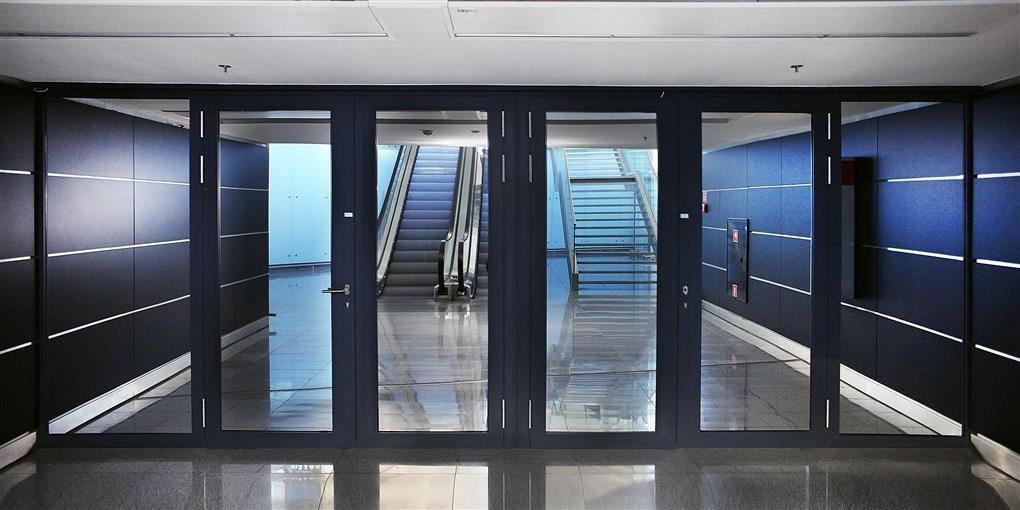In the UK, fire doors – πόρτες ασφαλείας – are required in buildings such as health centres, care homes, collections, public centres and colleges. Indeed, all public use buildings and household buildings of numerous line of work. The body for monitoring the presence and, just as importantly, the performance of these fire doors, is the FDIS (Fire Door Inspection Scheme).
It is extensively recognized that compartmentation is most likely one of the most reliable means of providing fire safety and security. It also stops the spread of a fire break out, and this aspect can be seriously endangered if your fire doors are not in excellent working condition. Current findings from the FDIS expose startling stats from their evaluations, with approximately 3.7 mistakes uncovered for every door checked. They are suggesting that most of GR buildings, the fire doors are not really suitable for function!
Below are the 5 most usual mistakes discovered through the assessments:
- Smoke or fire seals missing
- Excessive spaces around the door
- Incorrect or unclear signage
- Broken door leaves
- Inappropriate or badly fitted joints
1. Smoke or fire seals missing
All internal fire doors – πυρίμαχες πόρτες, as well as industrial doors, should be fitted with in-tumescent seals. These broaden with the heat in case of a fire break out. Consequently efficiently obstructing any kind of gaps around the door structure and avoiding the spread of smoke and fire into adjacent locations. Over 61% of the doors examined were located to have seals either missing out on, incorrectly fitted or otherwise filling these boundary spaces correctly, as a result rendering them inadequate in their use.
2. Excessive spaces around the door
When inner fire doors are installed, they have to fit appropriately within the door framework. This suggests that there should never be a gap broader than 3mm at any type of factor in between the door and its’ frame. This can be conveniently determined by examining the space with the size of a ₤ 1 coin. The evaluations showed that 34% of the doors tested had voids in excess of this dimension.
3. Incorrect or unclear signage
This might seem unimportant in fire door security, yet exact clear signs are very important in case of a fire. Individuals need to understand specifically which doors are fire doors, where they are and how to access them. If fire doors are not clearly authorized, after that individuals can leave them propped open or block accessibility to them without knowing that they may be threatening the security of others. Over a third of the doors evaluated had either inaccurate or not enough signs.
4. Broken door leaves
Broken doors will not provide the same security as those in excellent condition. Fifteen percent of the doors checked exposed damage to the door leaves.
5. Inappropriate or badly fitted joints
Once more, one those aspects that you may not at first assume important. Yet correct and appropriately fitted door furniture, such as hinges is vital to the general security facets of the doors. Every inner fire, or commercial, door needs to have at least 3 hinges, all with appropriately fitting screws present. Missing out on screws can endanger the stamina of the door under the intense heat created by a fire. Assessments showed practically one in five doors had improper hinges.
To appropriately safeguard locals and individuals of these structures, these doors must be checked frequently. If any one of these elements are jeopardized in any way, they should be reported to the relevant individual within the building!
See more about fire doors:
- ΘΩΡΑΚΙΣΜΕΝΕΣ ΠΟΡΤΕΣ ΑΣΦΑΛΕΙΑΣ
- ΚΛΕΙΔΑΡΙΕΣ ΑΣΦΑΛΕΙΑΣ ΑΘΗΝΑ
- ΠΥΡΑΝΤΟΧΕΣ ΠΟΡΤΕΣ
- ΠΟΡΤΕΣ ΠΥΡΑΣΦΑΛΕΙΑΣ
- ΚΛΕΙΔΑΡΙΕΣ ΑΣΦΑΛΕΙΑΣ ΜΑΡΚΟΠΟΥΛΟ
- ΠΟΡΤΕΣ ΑΣΦΑΛΕΙΑΣ ΜΑΡΟΥΣΙ
- ΚΛΕΙΔΑΡΙΕΣ ΑΣΦΑΛΕΙΑΣ ΜΕΓΑΡΑ
- ΠΟΡΤΕΣ ΑΣΦΑΛΕΙΑΣ ΜΕΛΙΣΣΙΑ
- ΚΛΕΙΔΑΡΙΕΣ ΑΣΦΑΛΕΙΑΣ ΜΕΝΙΔΙ
- ΠΟΡΤΕΣ ΑΣΦΑΛΕΙΑΣ ΜΕΤΑΜΟΡΦΩΣΗ
- ΚΛΕΙΔΑΡΙΕΣ ΑΣΦΑΛΕΙΑΣ ΜΕΤΑΞΟΥΡΓΕΙΟ
- ΠΟΡΤΕΣ ΑΣΦΑΛΕΙΑΣ ΜΕΤΣ
- ΚΛΕΙΔΑΡΙΕΣ ΑΣΦΑΛΕΙΑΣ ΜΙΚΡΟΛΙΜΑΝΟ
- ΠΟΡΤΕΣ ΑΣΦΑΛΕΙΑΣ ΜΟΝΑΣΤΗΡΑΚΙ
